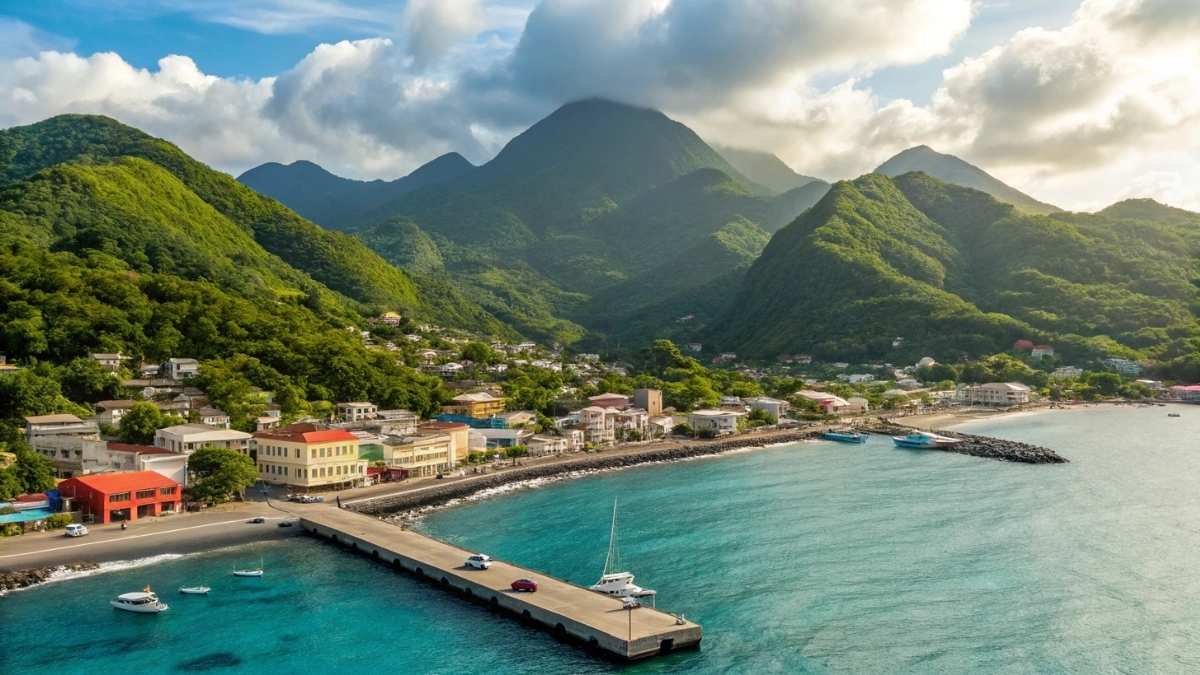
Some of the world’s most breathtaking escapes have been hiding in plain sight—quiet shores, untamed landscapes, and cultures untouched by mass tourism.
Now, with brand-new flight routes dropping fares to around $200 from major U.S. cities, these once-distant treasures are suddenly within reach. This isn’t about ticking off another tourist checklist; it’s about stepping into places where the pace slows, the air feels different, and every corner holds something unexpected.
From secluded beaches to dramatic coastlines, each destination here offers its kind of magic—ready to be explored before the rest of the world catches on.
1. Les Saintes, Guadeloupe (French Caribbean)
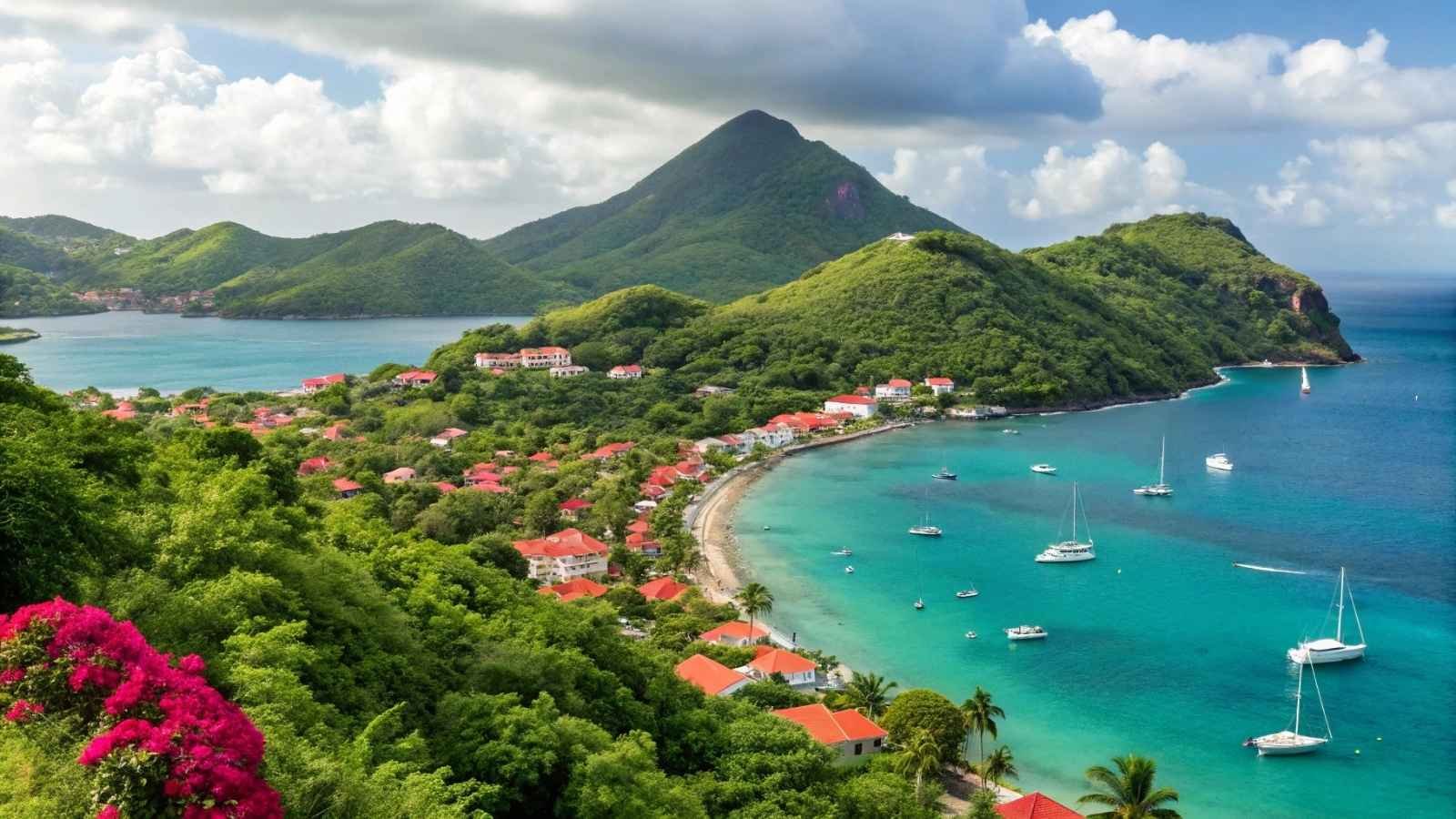
Tucked just south of Guadeloupe’s main islands, Les Saintes feels like the Caribbean before big resorts and cruise crowds. With its French colonial charm, cobblestone streets, and secluded beaches, it’s the kind of place where you can stroll barefoot from a bakery to the water in minutes. Direct flights to Guadeloupe from the U.S. now make this once-tricky ferry hop easier than ever, slashing travel time and cost. The air here has that blend of sea breeze and fresh baguette scent you only get in French overseas territories.
The main draw isn’t just its stunning beaches—it’s the pace of life. Anse du Bourg is lined with pastel-painted cafes and family-run restaurants serving Creole specialties. Meanwhile, Pain de Sucre Beach is a local favorite for snorkeling in crystal-clear water, where tropical fish dart through reefs just offshore. The whole island chain has less than 3,000 residents, so you won’t find chain hotels or traffic—just quiet coves and hilltop views.
Getting here now is simpler thanks to new flights into Pointe-à-Pitre, Guadeloupe, followed by a short ferry ride. From there, you’re in a completely different rhythm, one that invites long lunches, lazy swims, and exploring by rented scooter. If “hidden Caribbean” is on your bucket list, this is it.
Quick Travel Facts:
- Best Months to Visit: December to May (dry season, low humidity)
- Nearest Airport: Pointe-à-Pitre International (PTP), ferry from Trois-Rivières
- Currency: Euro (€)
- Language: French, Creole (English in tourist areas)
- Signature Dish: Accras de morue (cod fritters) with Ti’ Punch
2. Bonaire
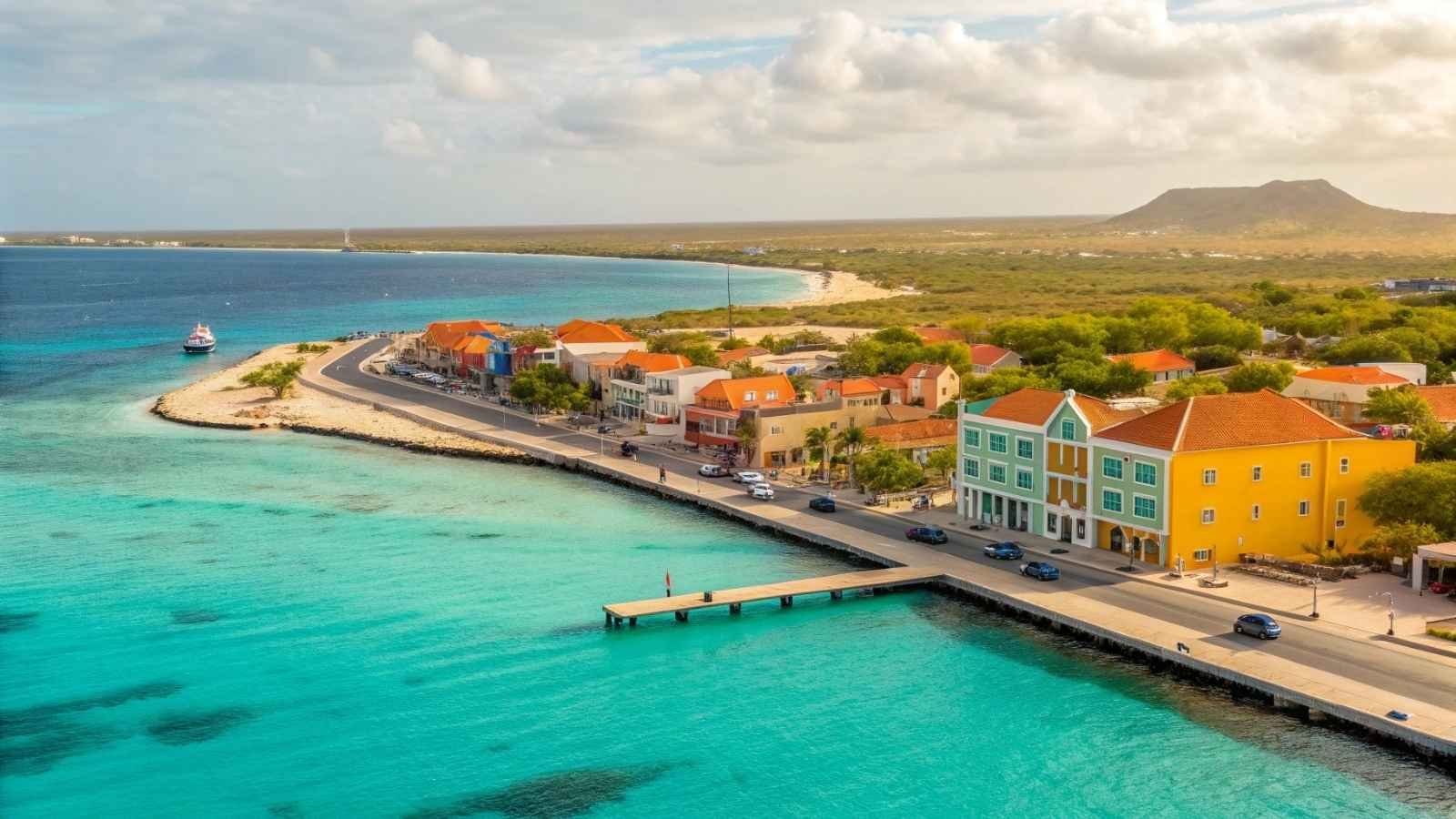
Bonaire is where divers and snorkelers go when they’re tired of busy reefs elsewhere. This tiny Dutch Caribbean island has one of the most protected marine environments in the world, with easy shore diving that makes it accessible even for beginners. Flights from New York have dropped to as little as $99 one-way recently, making it an affordable trip to a place that often feels like a private island.
What sets Bonaire apart is its unpretentious beauty. No high-rise resorts are dominating the coast, and the island has a rugged charm—wild donkeys wandering roadsides, flamingos wading in salt flats, and constant trade winds perfect for kiteboarding. Even the capital, Kralendijk, is more like a sleepy fishing town than a tourist hub, with colorful low-rise buildings and dockside cafes.
The real magic happens in the water. The entire coastline is a national marine park, meaning you can step in almost anywhere and be surrounded by vibrant coral and sea life within minutes. Whether you’re into diving, kayaking through mangroves, or simply floating in turquoise shallows, Bonaire delivers that “untouched” feeling without sacrificing safety or comfort.
Quick Travel Facts:
- Best Months to Visit: November to April (cooler, drier, calm seas)
- Nearest Airport: Flamingo International (BON)
- Currency: U.S. Dollar ($)
- Language: Dutch, Papiamento (English widely spoken)
- Local Tip: Rent a truck to explore hidden beaches and salt flats
3. Roatán, Honduras
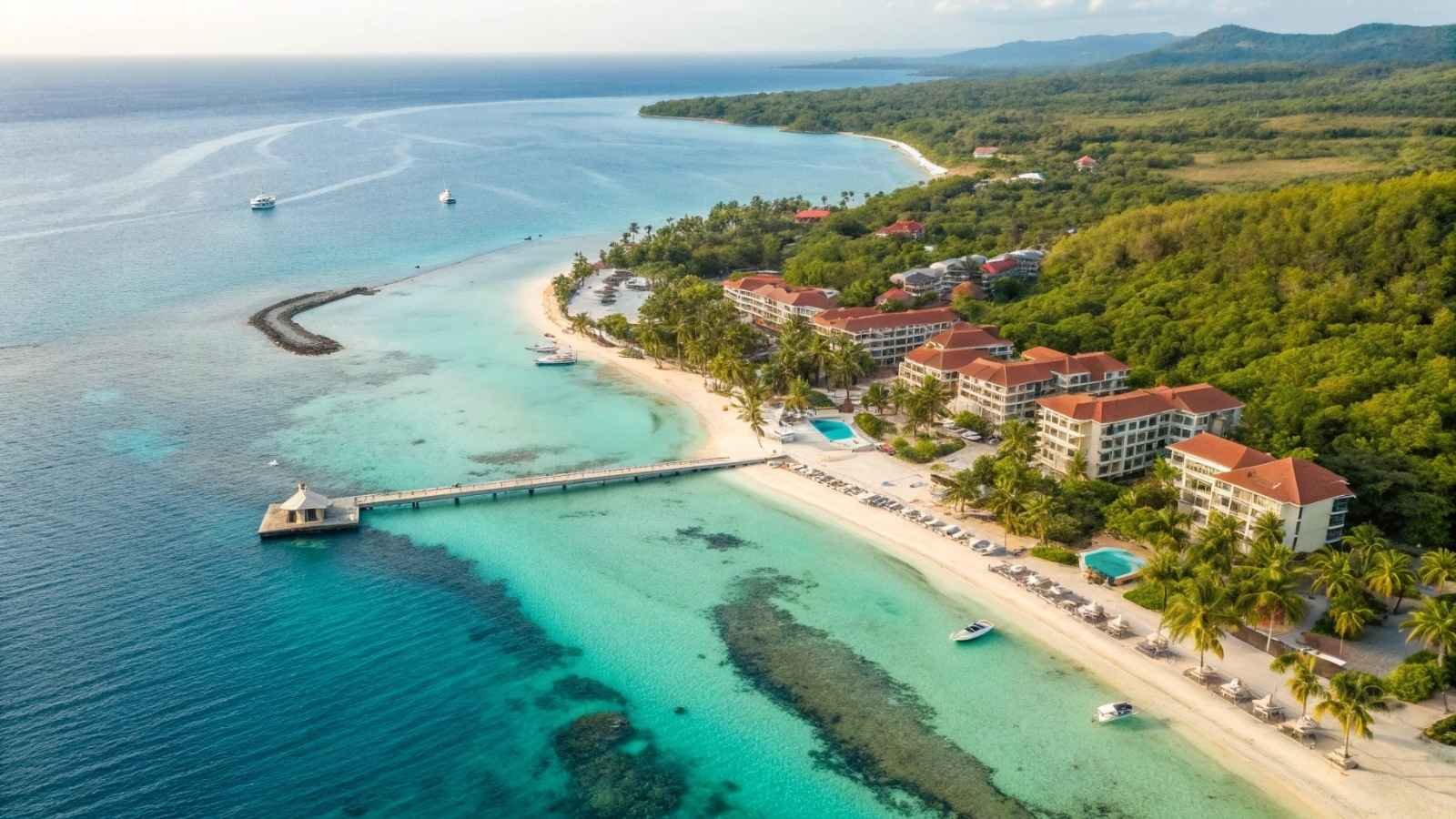
Roatán sits off the northern coast of Honduras, and while cruise ships have discovered it, much of the island still feels wild and untouched. It’s part of the Mesoamerican Barrier Reef—the world’s second-largest—which means world-class snorkeling and diving just minutes from shore. With new and expanded flights from several U.S. cities, getting here is far easier and cheaper than before.
The island offers a blend of Caribbean culture and Central American warmth. In the west, towns like West End and West Bay have palm-lined beaches with reef drop-offs so close you can swim to them. In the east, it’s another world—dirt roads, Garifuna villages, and mangrove channels perfect for kayaking. The seafood here is as fresh as it gets, often caught the same morning it’s served.
While the beaches are stunning, the inland jungle is equally inviting, with zip-lines, hiking trails, and small eco-resorts tucked into the hills. For travelers wanting variety—sunbathing one day, cultural excursions the next—Roatán delivers in a big way without draining your budget.
Quick Travel Facts:
- Best Months to Visit: March to August (warm, calm seas)
- Nearest Airport: Juan Manuel Gálvez International (RTB)
- Currency: Honduran Lempira (USD accepted in many areas)
- Language: Spanish, English are widely spoken in tourist zones
- Must-Try Dish: Baleadas (thick tortillas with beans, cheese, and more)
4. U.S. Virgin Islands

For many Americans, the U.S. Virgin Islands are a surprise—no passport needed, but they deliver all the Caribbean vibes you could ask for. Direct flights from multiple U.S. cities are running under $120 one-way, making these islands some of the easiest “undiscovered” escapes. While St. Thomas is the main hub, St. John and St. Croix are where you’ll find that quieter, off-grid charm.
St. John is two-thirds national park, meaning pristine beaches, hiking trails, and coral reefs without overdevelopment. St. Croix offers a fascinating mix of history, from old sugar mills to Danish colonial forts, alongside fantastic diving spots like the famed Buck Island Reef. The water here is startlingly clear, and the sand often feels untouched.
Because the islands are part of the U.S., everything from phone service to currency is familiar, yet the scenery feels worlds away. It’s a rare mix of convenience and beauty, making it an easy last-minute getaway without complex logistics.
Quick Travel Facts:
- Best Months to Visit: December to April (dry, mild weather)
- Nearest Airports: Cyril E. King (STT) for St. Thomas; Henry E. Rohlsen (STX) for St. Croix
- Currency: U.S. Dollar ($)
- Language: English
- Local Highlight: Take a ferry from St. Thomas to St. John for the day
5. Aguadilla, Puerto Rico
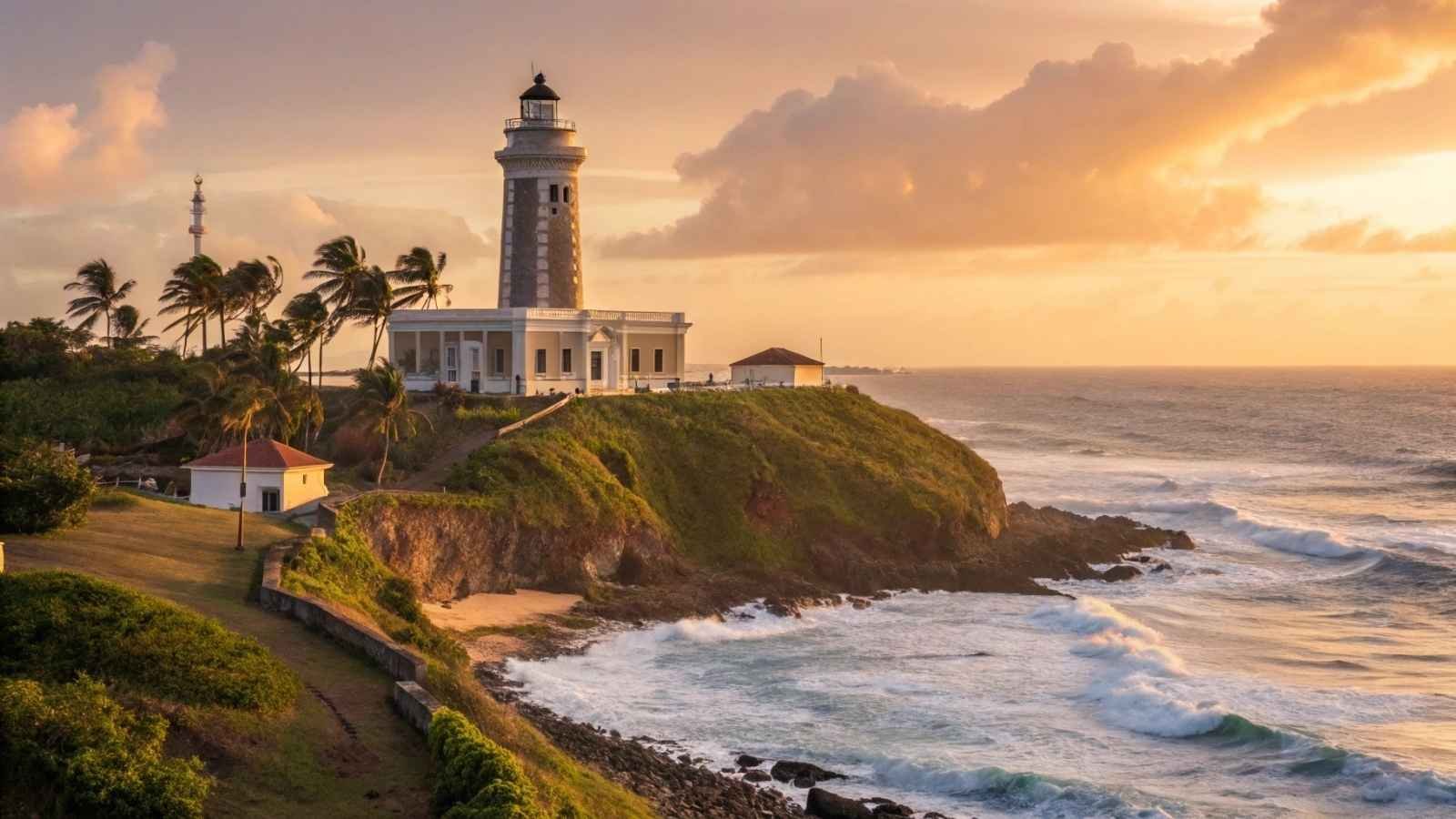
Set on Puerto Rico’s northwestern coast, Aguadilla is one of the island’s most underrated beach towns. While San Juan gets the spotlight, Aguadilla offers a more relaxed pace, with quiet coves, surfing beaches, and a growing food scene. New low-cost flights from New York mean you can be here for under $200 round-trip—often cheaper than domestic coast-to-coast airfare.
This area is known for its dramatic coastline—steep cliffs, secret caves, and stretches of golden sand that rarely see more than a handful of people at a time. Surfers flock to Crash Boat Beach and Surfers’ Beach, while divers explore nearby wrecks and reefs. Inland, you’ll find hiking trails, coffee farms, and small mountain villages that feel worlds away from the tourist hotspots.
Aguadilla is also a gateway to Puerto Rico’s “surf coast” and nearby towns like Rincón. It’s a fantastic choice for travelers who want the culture, cuisine, and natural beauty of Puerto Rico without the bustle of the capital.
Quick Travel Facts:
- Best Months to Visit: December to April (dry season, mild temps)
- Nearest Airport: Rafael Hernández International (BQN)
- Currency: U.S. Dollar ($)
- Language: Spanish, English widely understood
- Don’t Miss: Sunset at Crash Boat Beach—locals swear it’s the best on the island
6. San Juan, Puerto Rico
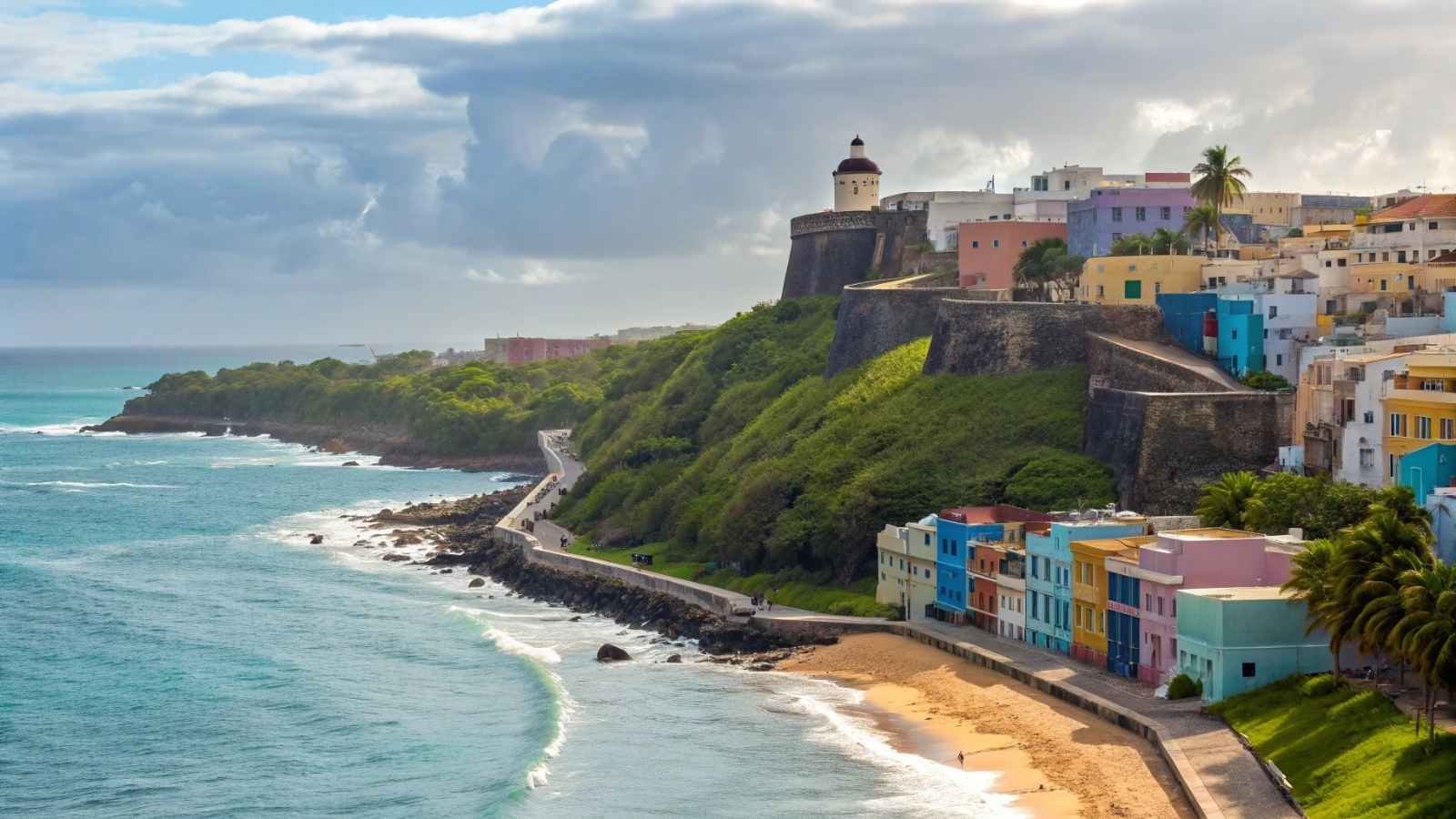
While San Juan is more famous than Aguadilla, it’s still surprisingly overlooked by travelers seeking affordable island escapes. The city blends centuries-old history with vibrant street life, all just steps from the beach. With frequent flight deals under $200 from multiple U.S. cities, it’s now easier than ever to turn a long weekend into a tropical getaway without breaking the bank.
Old San Juan is the heart of the city—a colorful grid of cobblestone streets, colonial forts, and pastel buildings. The Spanish forts El Morro and San Cristóbal stand guard over the harbor, offering sweeping ocean views. Just beyond, neighborhoods like Condado and Ocean Park offer beachside lounging and nightlife without losing that local Puerto Rican flair.
Beyond the city limits, you can take quick day trips to El Yunque National Forest, Puerto Rico’s lush tropical rainforest, or hop on a ferry to nearby islands like Culebra and Vieques. San Juan delivers a rare mix of city energy and island ease—ideal for travelers who want both cultural depth and sandy toes.
Quick Travel Facts:
- Best Months to Visit: December to April (dry season)
- Nearest Airport: Luis Muñoz Marín International (SJU)
- Currency: U.S. Dollar ($)
- Language: Spanish, English are widely spoken
- Local Favorite: Mofongo with garlic shrimp in Old San Juan
7. Hilton Head Island, South Carolina
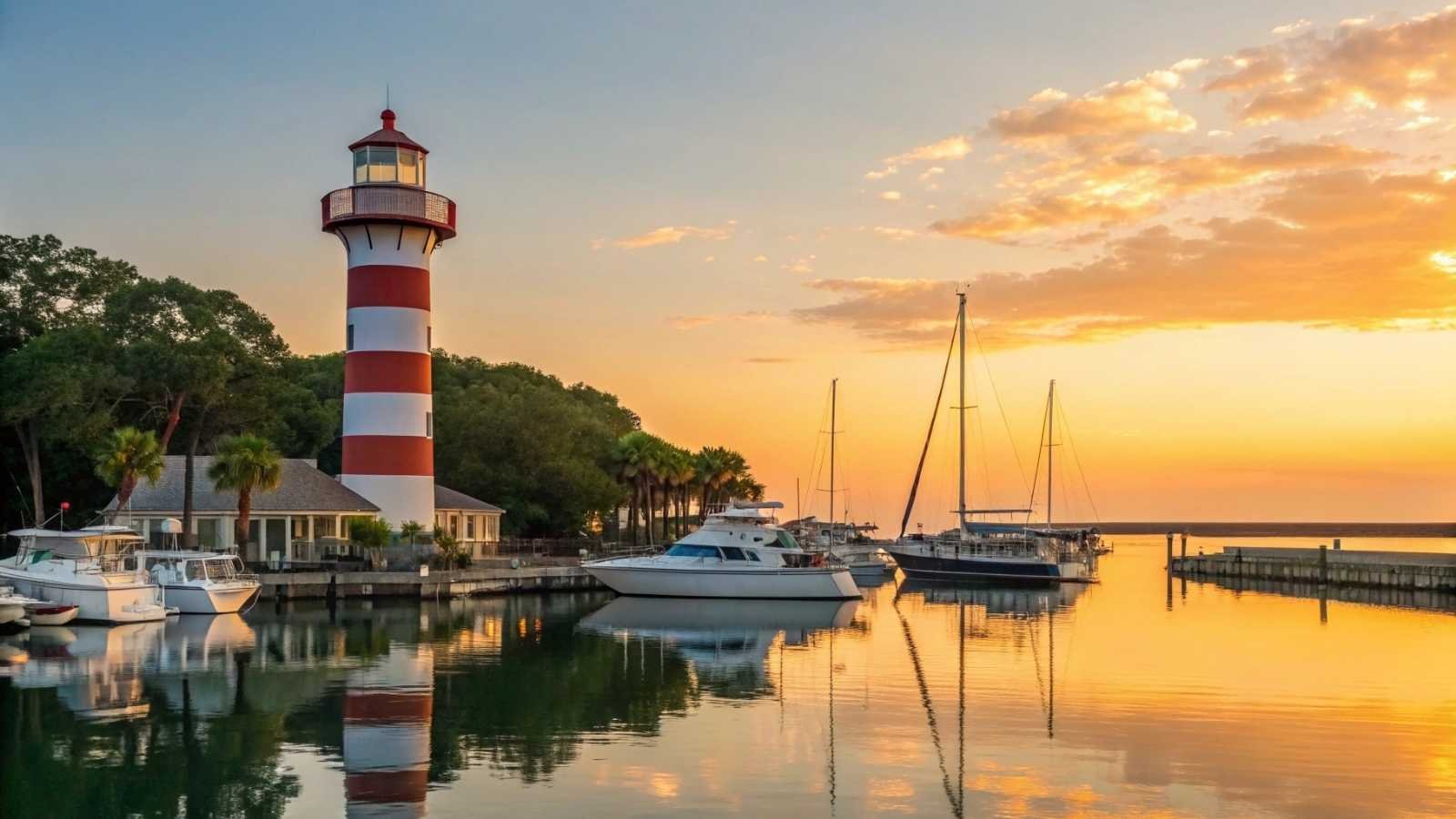
Hilton Head might be known in the Southeast, but for many travelers across the U.S., it’s still under the radar—especially now that new direct flights from Atlanta are dropping one-way fares to around $159. This Lowcountry island delivers a more refined take on the beach vacation, with miles of bike paths, quiet beaches, and an emphasis on nature over nightlife.
The beaches here are long, flat, and perfect for morning walks or cycling right along the shore. Inland, Sea Pines Forest Preserve offers peaceful trails, wildlife viewing, and freshwater lagoons. While golf is a big draw—Hilton Head has more than 20 courses—non-golfers can spend days kayaking through marshes or browsing local markets.
Unlike many tourist-heavy islands, Hilton Head enforces strict building codes that keep high-rises and neon signs at bay. The result is a place that feels tranquil and upscale without being exclusive, making it perfect for families, couples, or solo travelers seeking a slower rhythm.
Quick Travel Facts:
- Best Months to Visit: April to May, September to October (mild weather, fewer crowds)
- Nearest Airport: Hilton Head Island Airport (HHH)
- Currency: U.S. Dollar ($)
- Language: English
- Local Tip: Rent bikes—there are more than 60 miles of paths island-wide
8. Nuuk, Greenland

Few places feel as truly “undiscovered” as Nuuk, Greenland’s small but vibrant capital. Thanks to new direct flights from Newark, reaching this Arctic gem is now far less daunting than before. While prices fluctuate, the route offers savings of hundreds compared to previous connections through Europe.
Nuuk is set against a backdrop of fjords, mountains, and an ever-changing sky. The town itself blends colorful Nordic houses with a growing art and food scene—expect fresh seafood, musk ox dishes, and locally brewed beer. Summer brings long daylight hours for hiking, boating, and exploring nearby glaciers. Winter offers northern lights displays that feel almost private.
Greenland’s appeal lies in its rawness—there’s no overdevelopment, no crowds, just pure wilderness. For adventurous travelers, Nuuk offers an entry point to explore the country’s remote settlements, icebergs, and Inuit culture without days of extra travel.
Quick Travel Facts:
- Best Months to Visit: June to September (mild weather, midnight sun)
- Nearest Airport: Nuuk Airport (GOH)
- Currency: Danish Krone (DKK)
- Language: Greenlandic, Danish (English widely understood in tourism)
- Don’t Miss: Boat trips through the Nuuk Fjord for iceberg spotting
9. Bermuda
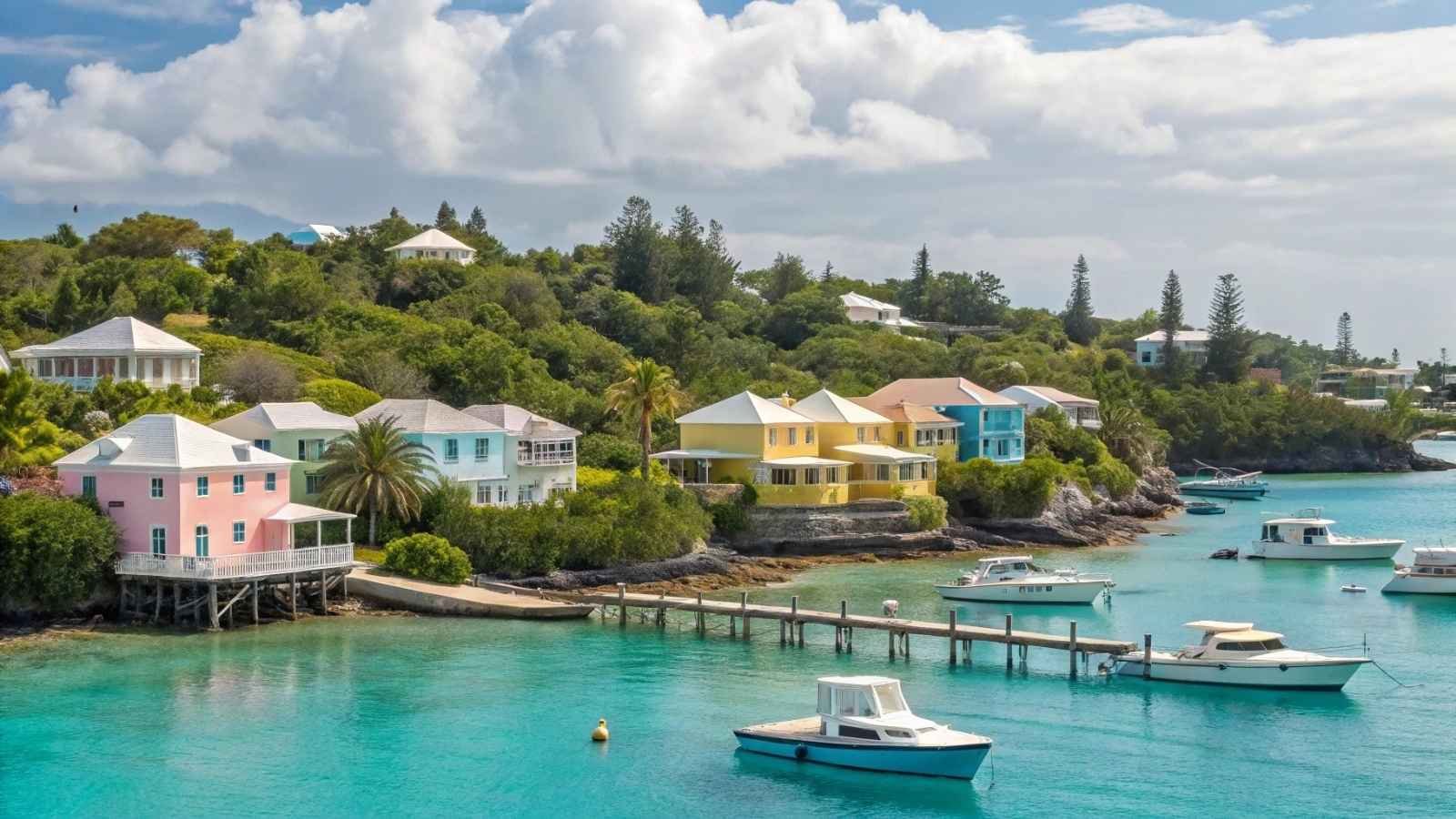
Bermuda often gets lumped into the Caribbean, but it’s actually in the North Atlantic—and has its own distinct culture and style. With new direct flights from smaller U.S. cities like Charleston, it’s becoming more accessible, and shoulder-season deals can bring prices close to the $200 range.
The island’s beaches are famous for their pink-hued sand and turquoise water, but Bermuda is more than just a pretty coastline. The capital, Hamilton, offers pastel buildings, harborfront restaurants, and lively markets. Inland, you’ll find botanical gardens, caves, and old military forts that speak to the island’s layered history.
Because it’s farther north than the Caribbean, Bermuda has a slightly cooler climate—perfect for golf, sailing, and cycling along the scenic Railway Trail. The island’s blend of British tradition and island warmth makes it unique in the region.
Quick Travel Facts:
- Best Months to Visit: April to June (before peak summer crowds)
- Nearest Airport: L.F. Wade International (BDA)
- Currency: Bermuda Dollar (1:1 with USD)
- Language: English
- Must-Try: Fish sandwich on raisin bread with tartar sauce and hot sauce
10. Dominica
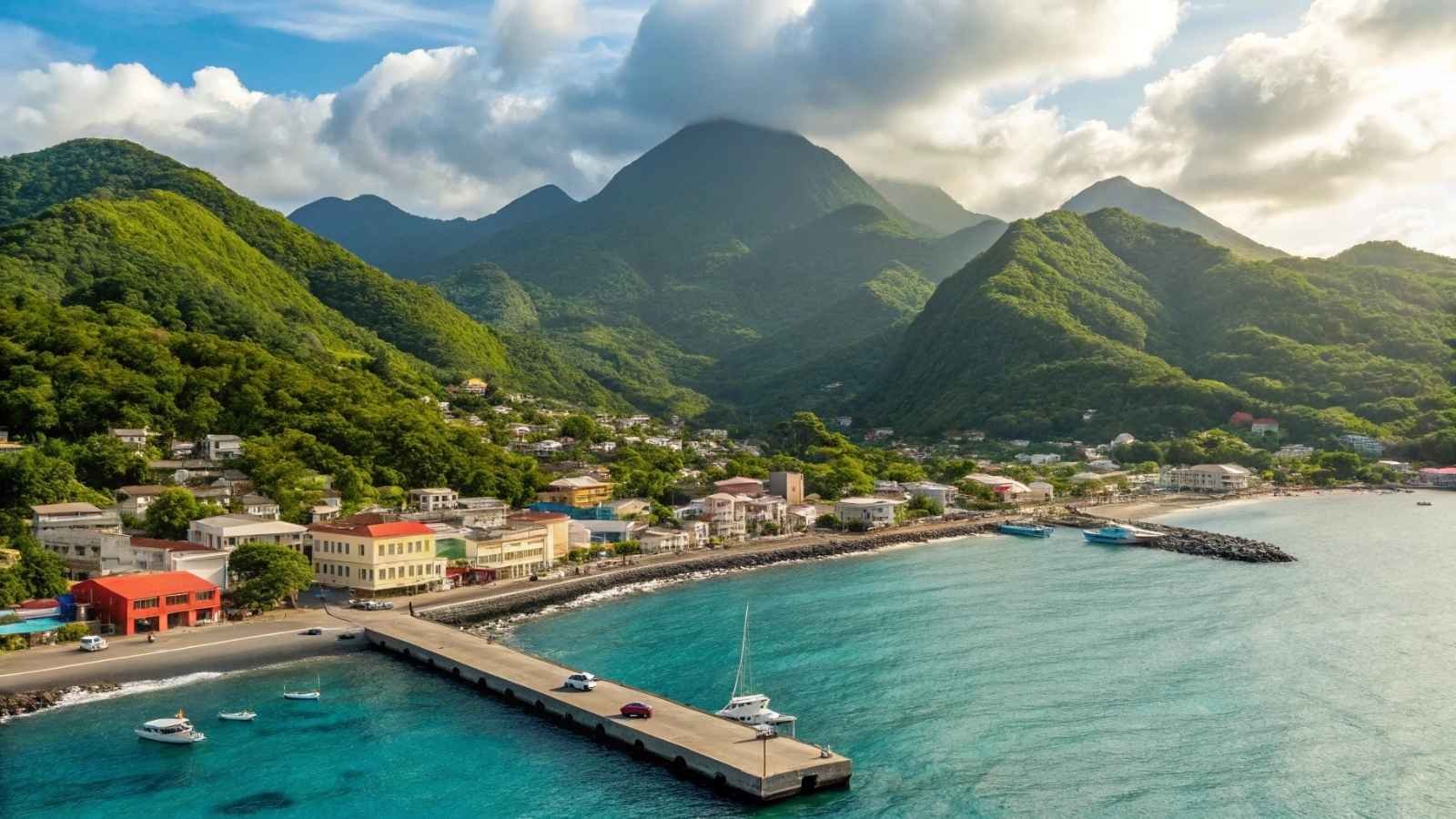
Not to be confused with the Dominican Republic, Dominica is a volcanic island known as the “Nature Island” for its unspoiled landscapes. New direct flights from Newark are making it easier to reach—a big deal for a destination that used to require multiple hops.
Dominica is all about nature tourism—lush rainforests, waterfalls, boiling lakes, and black-sand beaches. The island is part of the Caribbean but feels completely different: fewer resorts, more eco-lodges, and a focus on hiking, diving, and whale watching. The Waitukubuli National Trail spans the island for those who want a serious trek.
Its volcanic origins mean you’ll also find hot springs and natural sulfur pools scattered throughout the countryside. Dominica’s slower pace and deep connection to nature make it a perfect choice for travelers seeking a raw, restorative experience.
Quick Travel Facts:
- Best Months to Visit: February to May (dry season)
- Nearest Airport: Douglas–Charles Airport (DOM)
- Currency: East Caribbean Dollar (XCD)
- Language: English (French Creole spoken in rural areas)
- Highlight: Snorkeling in Champagne Reef, where bubbles rise from volcanic vents
11. Faroe Islands
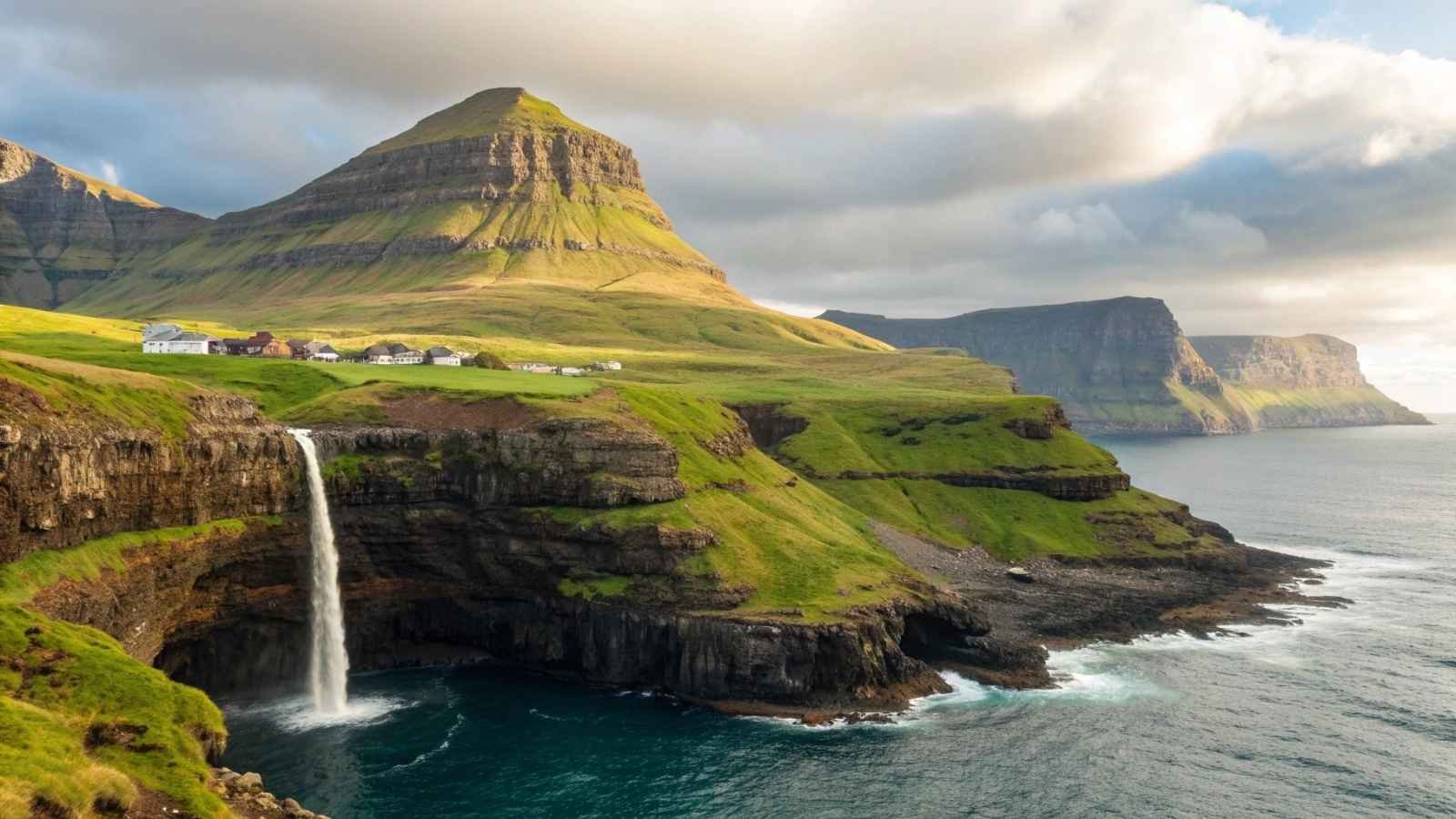
Perched in the North Atlantic between Iceland and Norway, the Faroe Islands feel like they belong in a storybook—green cliffs dropping into churning seas, tiny turf-roofed villages, and winding roads that disappear into mist. New seasonal flights from New York have cut travel time dramatically, opening this once far-flung destination to adventurous U.S. travelers. While not typically under $200, the new route shaves hundreds off what it used to cost, making it far more attainable.
The draw here is the raw drama of the landscape. Mulafossur Waterfall, tumbling straight into the ocean, is the kind of sight you never forget. Villages like Gjógv and Saksun seem frozen in time, and sheep easily outnumber people. Hiking trails are everywhere, leading you along ridgelines, past lakes, and to viewpoints where the wind feels like it might lift you off your feet.
The Faroes aren’t about lounging on beaches—they’re about embracing the elements. The weather changes quickly, but that’s part of the experience. One hour you’re in golden light, the next wrapped in fog that makes the cliffs seem even more mysterious. For travelers who crave landscapes over luxury, the Faroes deliver something rare: a sense of discovery that hasn’t been dulled by mass tourism.
Quick Travel Facts:
- Best Months to Visit: June to August (milder weather, long days)
- Nearest Airport: Vágar Airport (FAE)
- Currency: Faroese Króna (pegged to Danish Krone)
- Language: Faroese, Danish (English widely understood)
- Local Tip: Dress in layers—sunshine and rain can trade places in minutes
12. Aruba & Curaçao
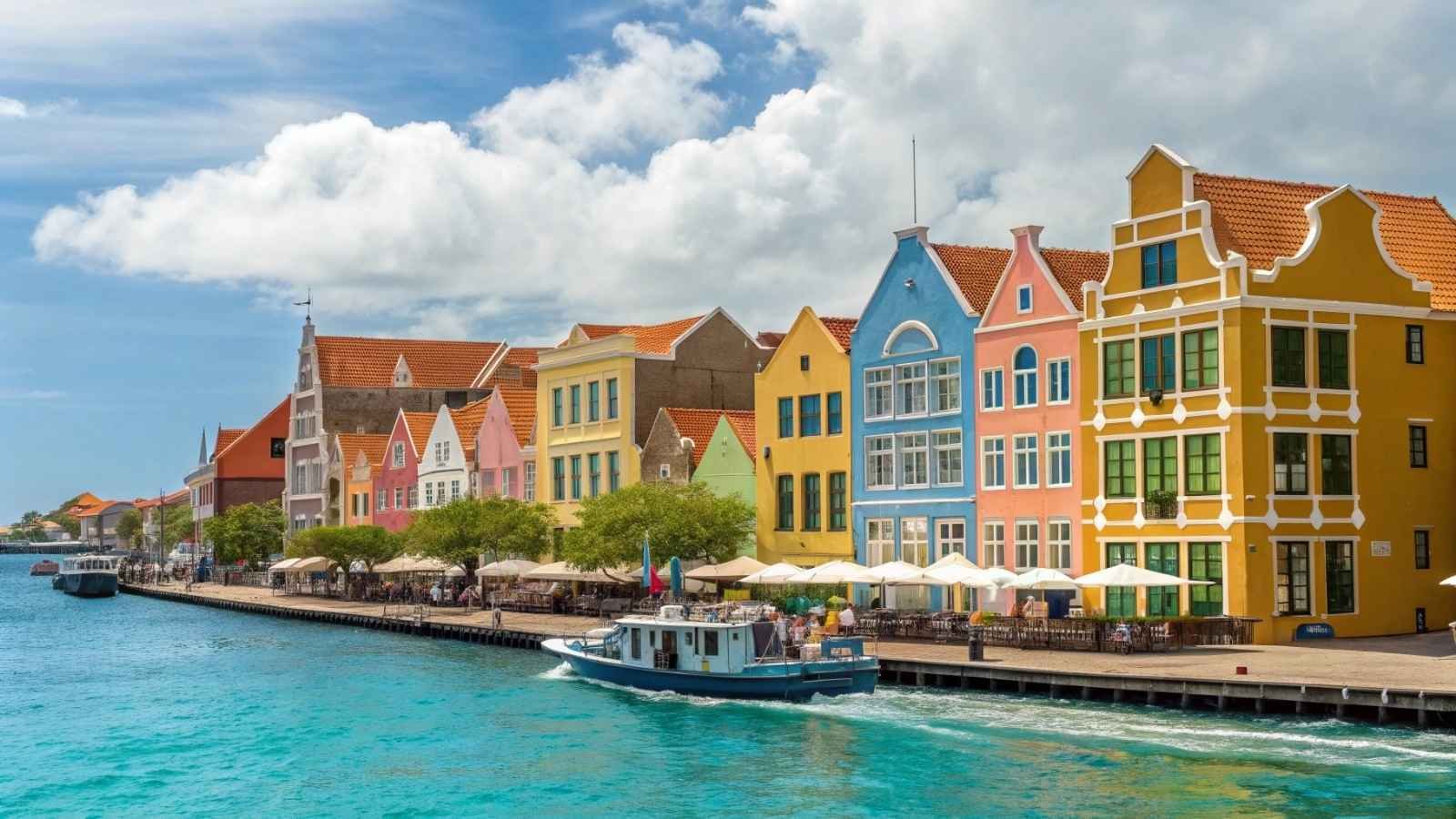
Though they’re part of the well-known ABC Islands, Aruba and Curaçao have plenty of corners that still feel far from the tourist radar—especially if you skip the main resorts. Both islands have recently seen new, competitively priced flights from the U.S., with round-trip fares dropping under $400 and occasional one-way deals close to the $200 mark.
Aruba is best known for its white-sand beaches and crystal-clear waters, perfect for snorkeling or simply unwinding. But head inland and you’ll find Arikok National Park, a rugged landscape of cacti, caves, and hidden coves that most visitors never see. Curaçao, meanwhile, has a distinct Dutch-Caribbean personality, with pastel-colored architecture in Willemstad, street art-filled alleys, and a thriving food scene that mixes Caribbean, Indonesian, and European flavors.
Both islands share consistently warm, sunny weather and lie outside the hurricane belt, making them a reliable choice year-round. The real trick is exploring beyond the postcard views—whether it’s a hidden snorkeling spot, a roadside barbecue stand, or a quiet fishing village where the day’s catch becomes your dinner.
Quick Travel Facts:
- Best Months to Visit: January to May (dry season, less humidity)
- Nearest Airports: Queen Beatrix International (AUA) for Aruba, Curaçao International (CUR) for Curaçao
- Currency: Aruban Florin (AUA), Netherlands Antillean Guilder (ANG) — USD widely accepted
- Language: Dutch, Papiamento (English common in tourist areas)
- Don’t Miss: Night snorkeling with fluorescent plankton in Curaçao’s bays






